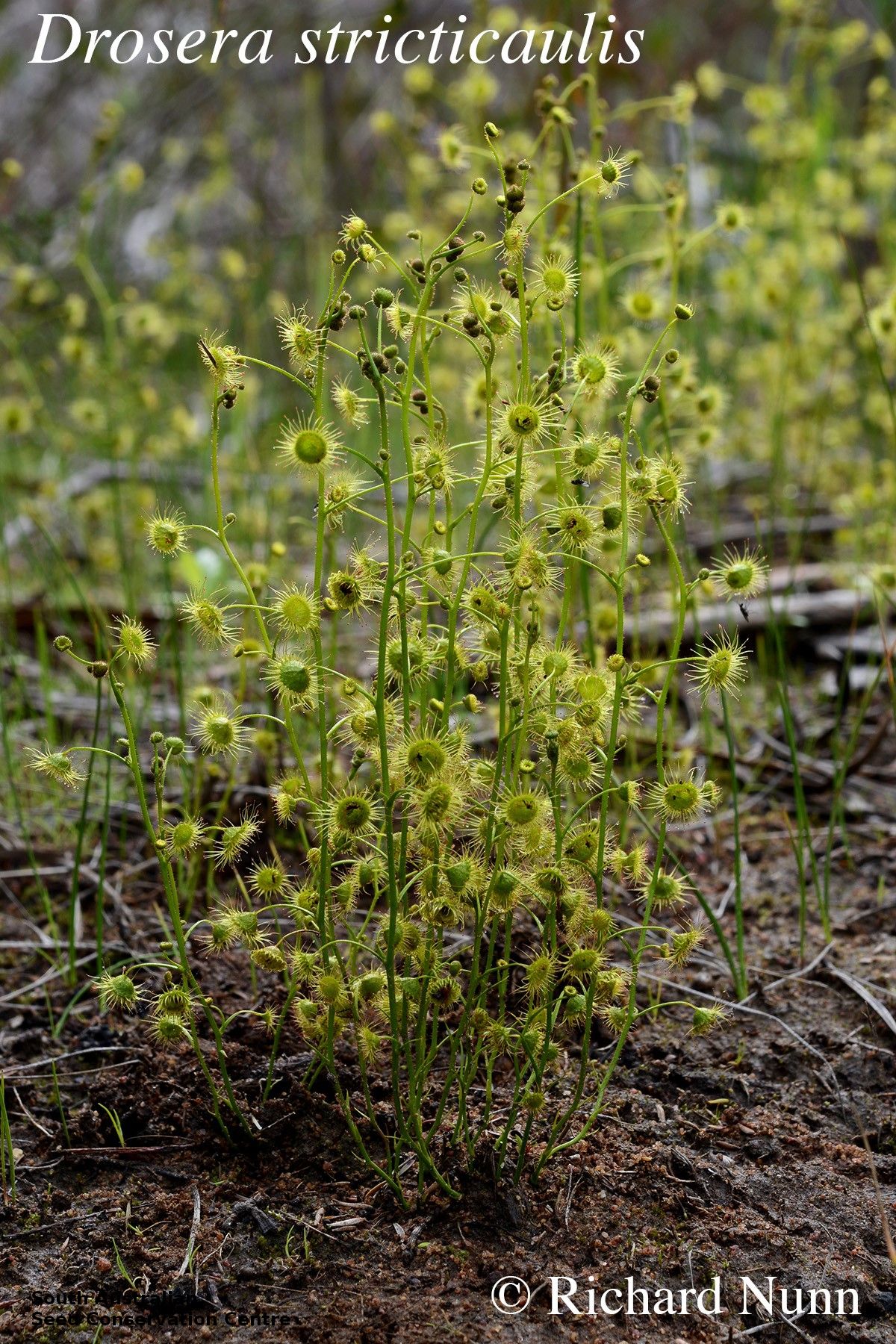
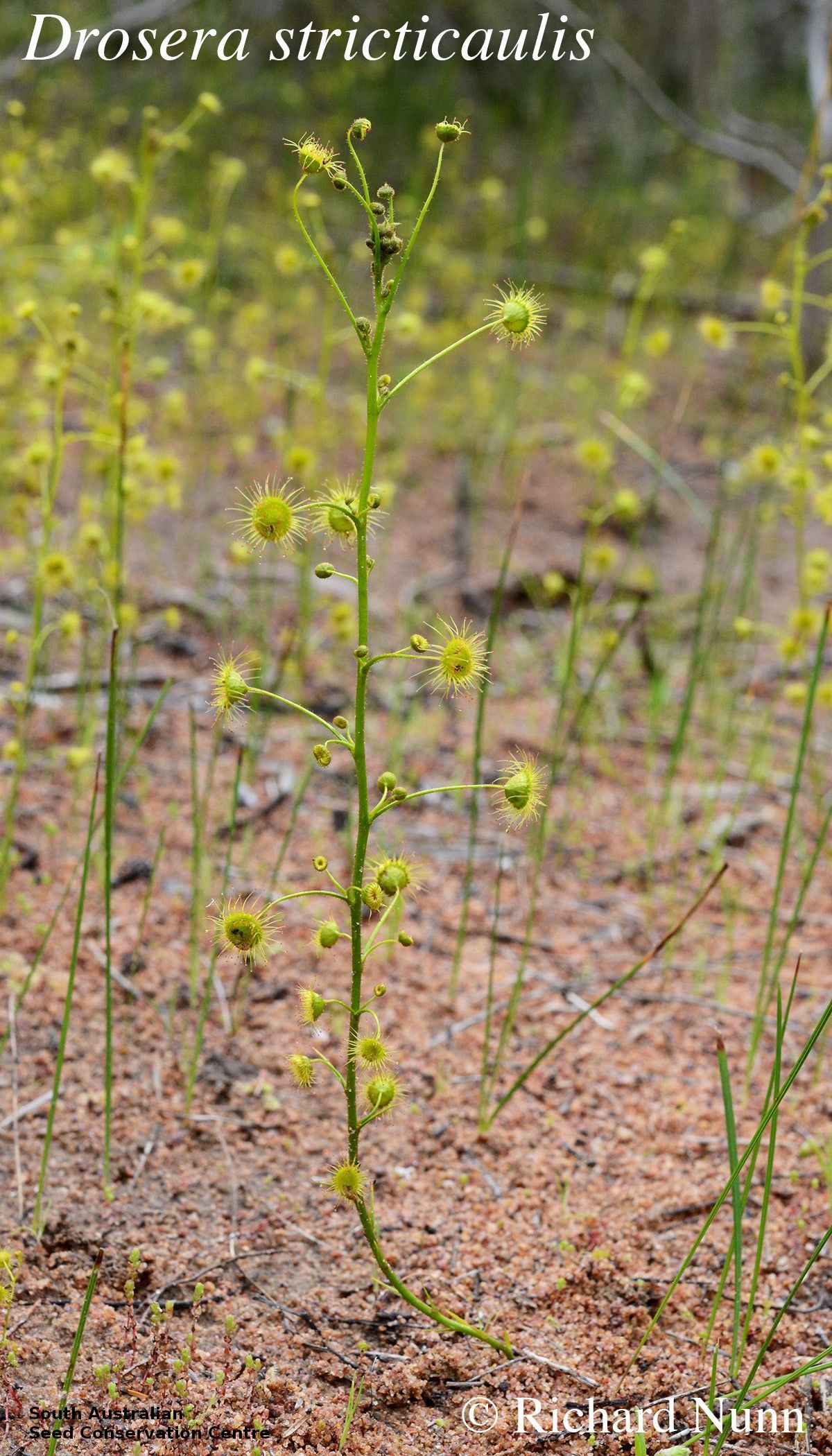

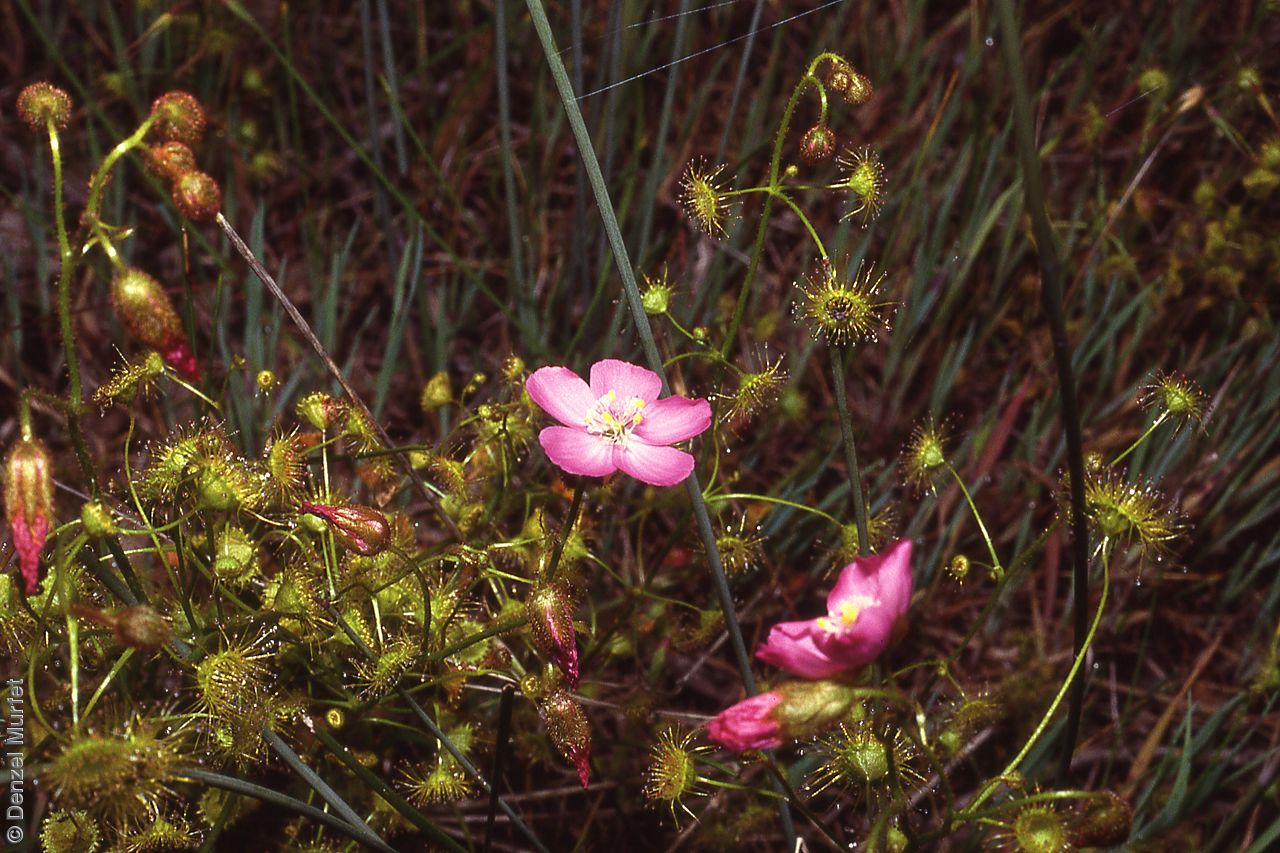
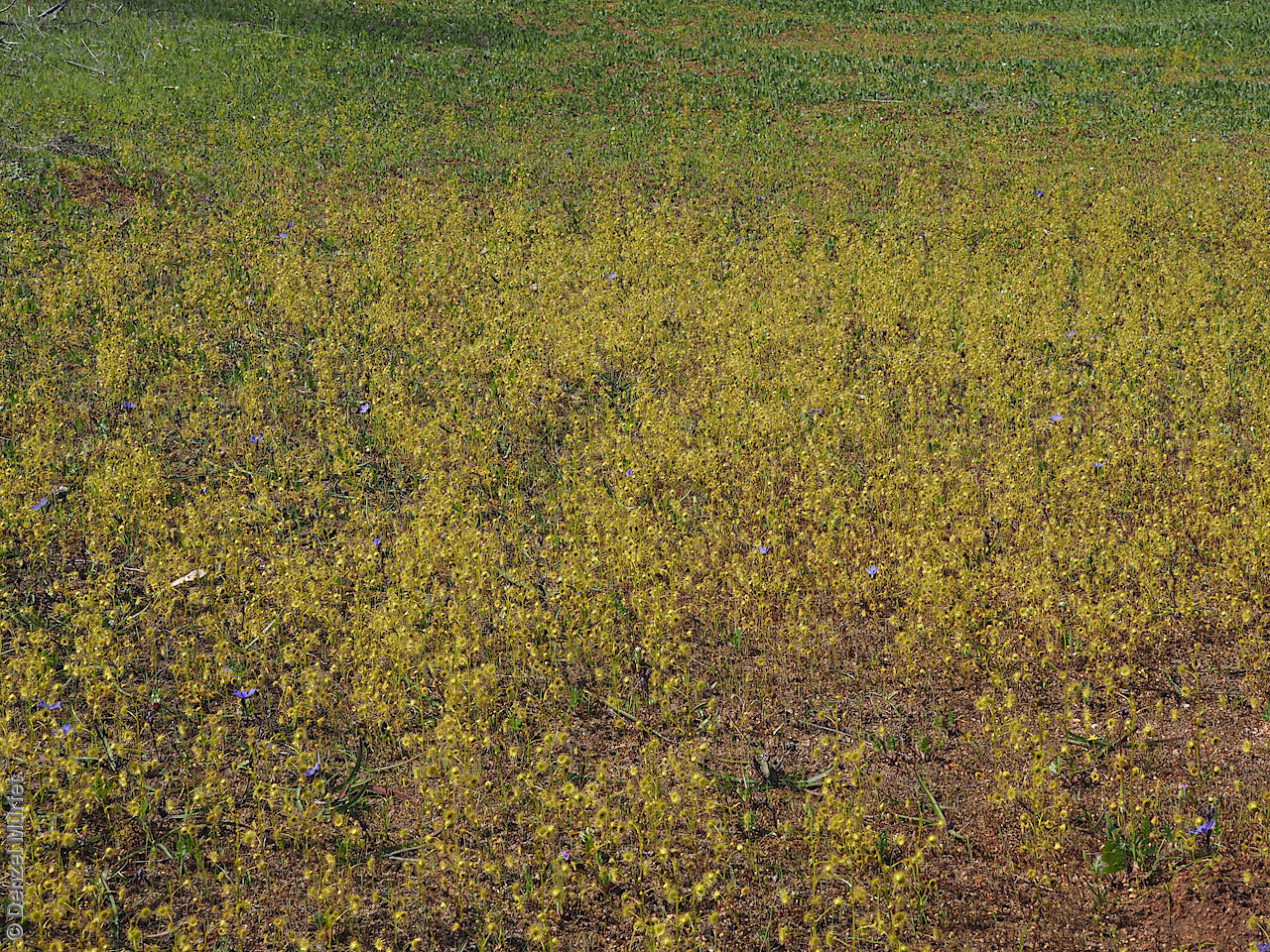
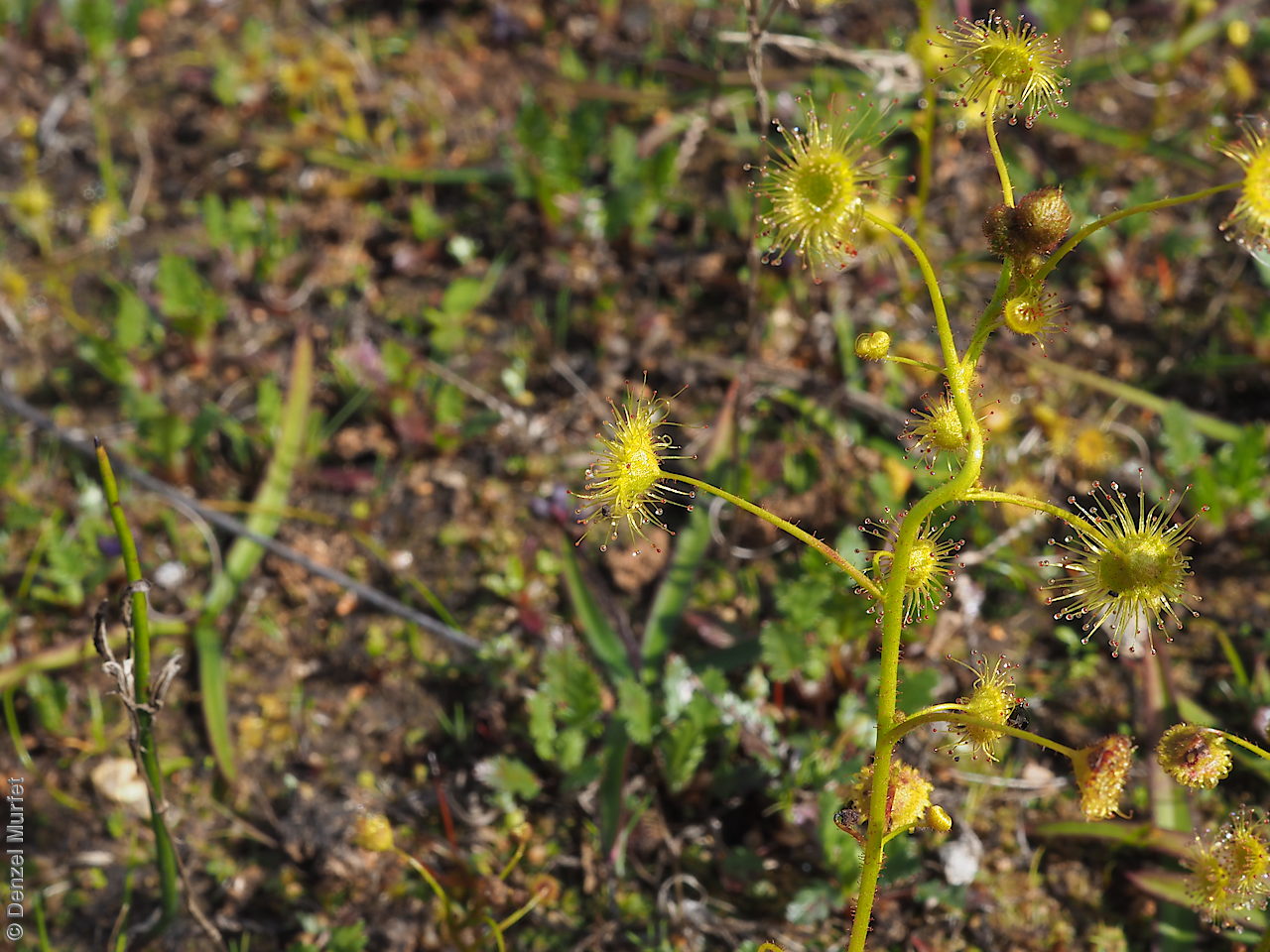
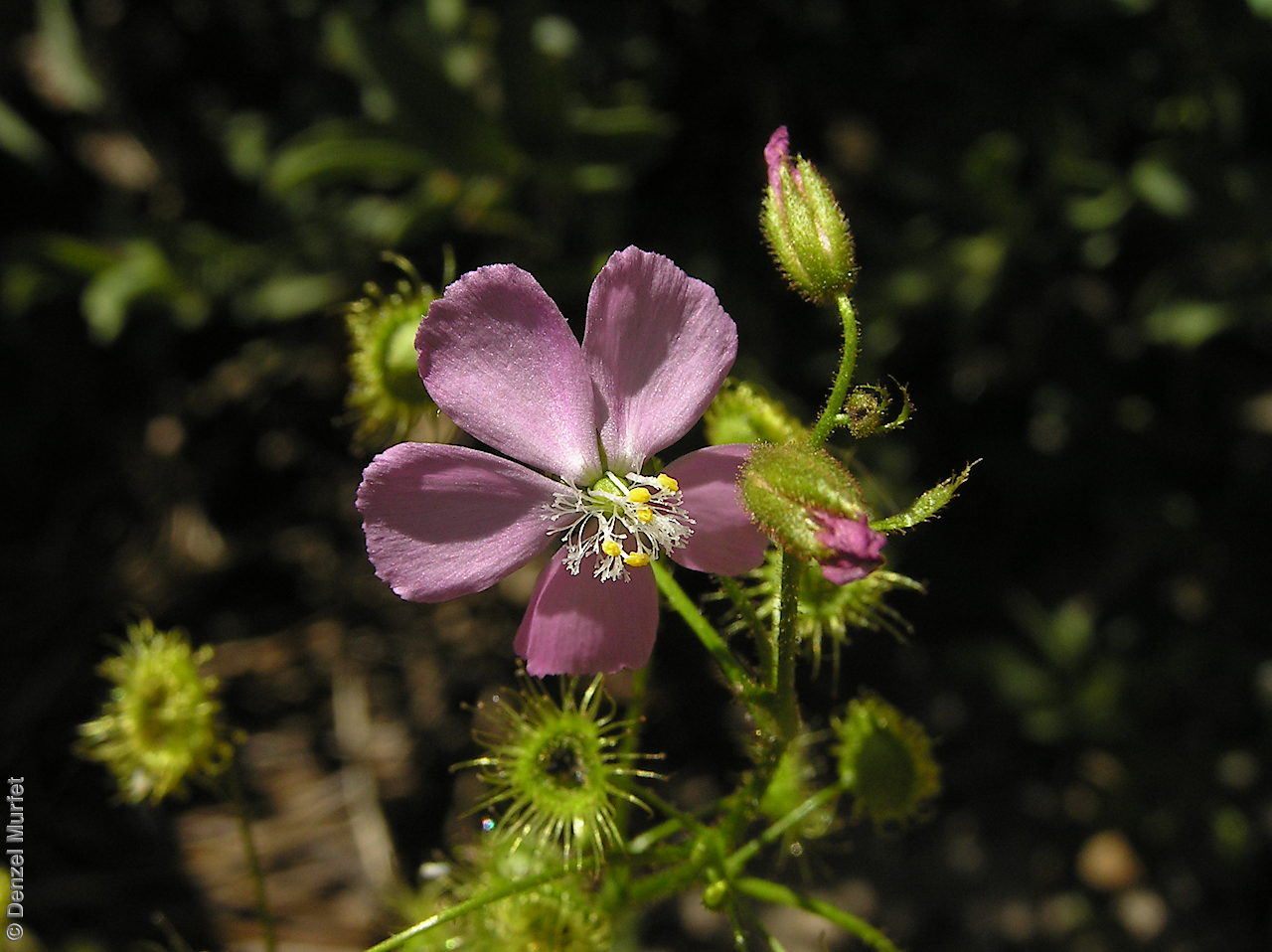
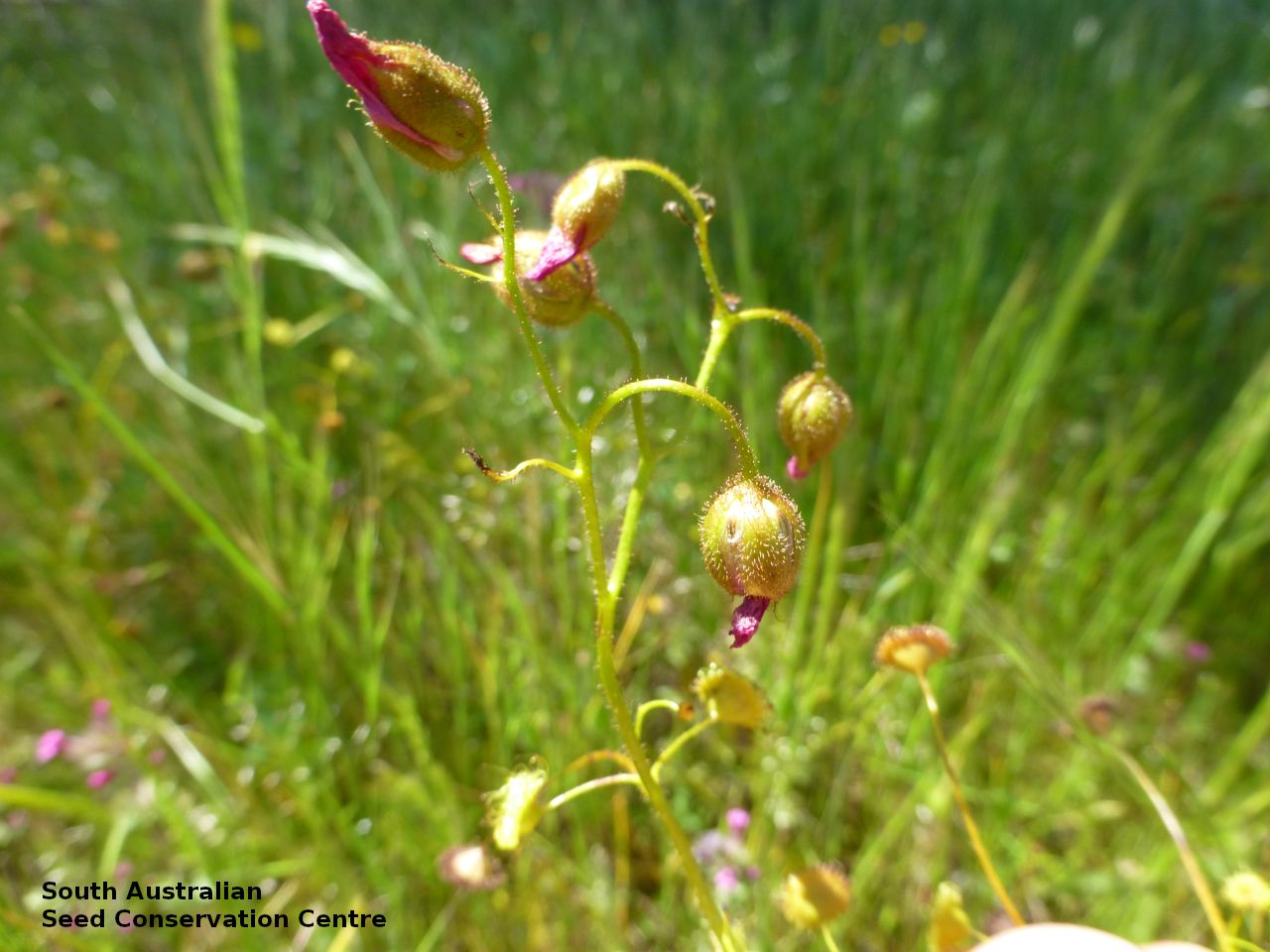



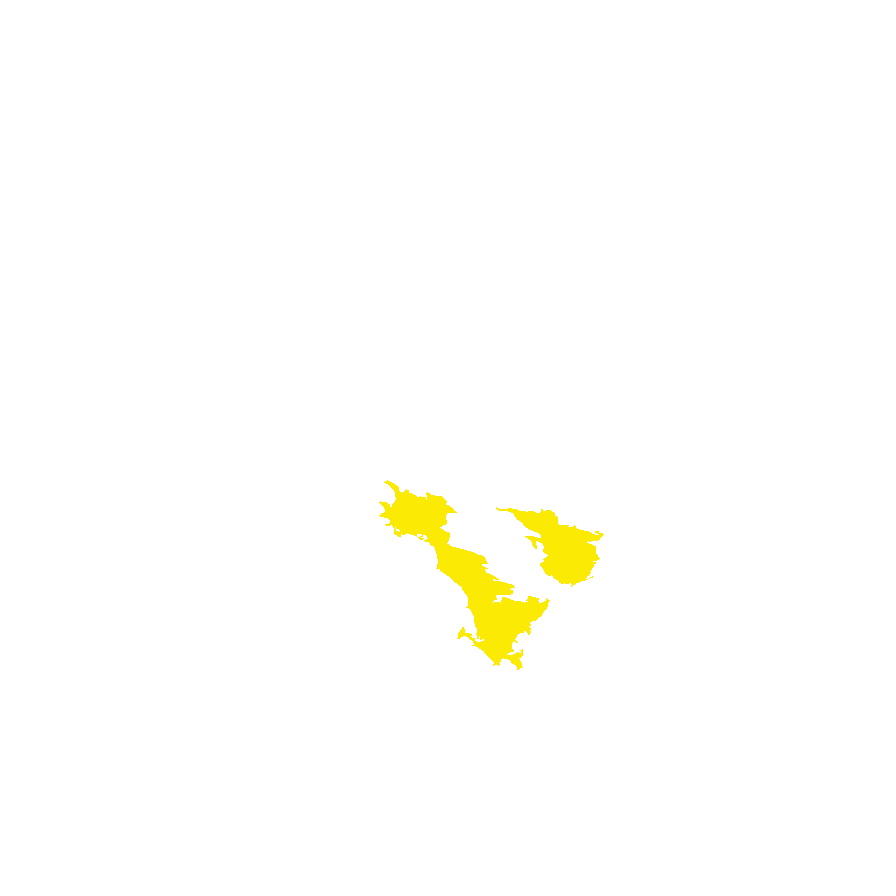
Prior names
Drosera aff. stricticaulis
Drosera macrantha var. stricticaulis
Drosera sp. Rigid (R.J.Bates 2268)
Etymology
Drosera from the Greek 'droseros' meaning dewy, alluding to the glistening hairs of the glandular leaf laminae. Stricticaulis means upright stems, alluding to the erect flower-stalk.
Distribution and status
Found on southern Eyre Peninsula and on Dutchmans Stern in the Flinders Ranges in South Australia, growing on sandy clay- loam along watercourses and granite outcrops. Also found in Western Australia. Native. Rare in South Australia. Uncommon in Western Australia.
Herbarium region: Eyre Peninsula
NRM region: Eyre Peninsula
AVH map: SA distribution map (external link)
Plant description
Perennial, yellow-green herb, annual with a white, generally glabrous, minutely tuberculate stem tuber; erect stem, usually sparsely branched distally; minutely glandular-hairy. Stem leaves alternate in clusters of 3, circular, cup-shaped, peltate, to 6 mm diameter. Inflorescence a terminal cymose panicle, 3–14-flowered; sepals narrowly ovate-lanceolate to 8 mm long and 4 mm wide; stalked glandular-hairy; petals pink, broadly obovate to 12 mm long and 10 mm wide. Flowering between August and November. Fruits are brown globose capsule, erect and enclosed in persistent sepals. Seeds are black nail-shaped seed to 1.5 mm long, with a wrinkled surface.
Seed collection and propagation
Collect seeds between October and December. Collect mature capsules, those that are fat, hard, turning brown and contain black seeds inside. Place the capsules in a tray and leave to dry for one to two weeks. Then rub the capsules gently by hand to dislodge the seeds. Use a sieve to separate the unwanted material. Store the seeds with a desiccant such as dried silica beads or dry rice, in an air tight container in a cool and dry place. From one collection, the seed viability was average, at 70%.
| Location | No. of seeds (weight grams) | Number of plants | Date collected | Collection number Collection location | Date stored | % Viability | Storage temperature |
|---|---|---|---|---|---|---|---|
| BGA MSB | 2,750 (0.13 g) 2,750 (0.13 g) | 100+ | 16-Oct-2012 | JRG27 Eyre Peninsula | 27-Feb-2014 | 70% | -18°C |
Number of plants: This is the number of plants from which the seeds were collected.
Collection location: The Herbarium of South Australia's region name.
% Viability: Percentage of filled healthy seeds determined by a cut test or x-ray.